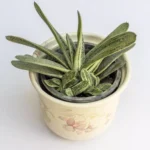Spring wouldn’t be the same without tulips. They are perfect for adding colour to borders in April and May and grow very well in pots.
Tulips are spring bulbs, planted in mid to late autumn. Tulips are technically perennial, but years of breeding to get the most beautiful blooms means that many varieties only flower reliably for one year. Many gardeners plant new bulbs each autumn to ensure a good display.

Some tulips flower earlier than others – early-flowering varieties bloom from late March to April, mid-season bulbs in April to May, and late-flowering ones bloom in May. You can prolong your displays by growing a mix of different types. You can also mix flower shapes, heights and colours. Combining tulips can be quite an art but you can buy ready-selected bulb mixes at the garden centre or online.
Plant tulip bulbs in moist but well-drained soil in a sunny spot in mid- to late autumn – November is ideal. Plant at least three times the depth of the bulb, pointed end up, around 5cm apart. For the best displays, plant fresh bulbs each autumn.
Tulips of all types do best in a sunny, sheltered spot in well-drained soil. It’s a good idea to plant tulips behind perennials in a border – the perennials’ emerging foliage will conceal the leaves of the tulips as they die back. Improve heavy clay or sandy soils by incorporating plenty of well-rotted organic matter before planting. If your soil is especially heavy, you could add some horticultural grit to the bottom of the planting hole. Conditions in your garden not ideal? Find out how to grow tulips in problem places.
Tulips also grow very well in pots, in peat-free multipurpose compost.
You can plant tulip bulbs from mid-October, but November is thought to be the optimum time as the colder conditions reduce the risk of the fungal disease tulip fire. If you’ve not got around to planting tulip bulbs by November don’t worry, you can get away with planting them as late as December, or even January – they should still bloom in spring.
If you’ve forgotten to buy bulbs altogether, you can buy potted tulips in the spring at the garden centre – enough to create a pot display or two.
How to plant tulips
In autumn, dig a planting hole with a garden trowel or bulb planter and drop the bulb into the hole with the pointed end up. There’s no need to soak tulip bulbs; simply plant them 20cm deep or at a depth of three times the bulbs’ height, with about 5cm between each one. For the best display, plant tulips en masse.
Tulips grow very well in pots. Half-fill the container with peat-free multi-purpose compost and plant the bulbs at three times their depth, with a few centimetres between each one. Top up with compost. In this clip from Gardeners’ World, Monty Don demonstrates how to plant tulips and evergreens in a pot in autumn:
How to deadhead tulips
Tulips can be kept in the soil all year round to reflower the following year, but you may find they don’t put on as much of a display, and may be shorter and have smaller flowers than previously. To prevent this, it’s important to ensure as much nutrients as possible return to the tulip bulbs. Deadhead them after flowering to stop the plants wasting energy on producing seed (the exception to this rule is for species tulips, which should be left to develop seed and naturalise around your garden). Don’t cut back foliage until it has turned yellow, which will be about a month after flowering. If you cut back the foliage too early the bulbs will be weaker the following year.
